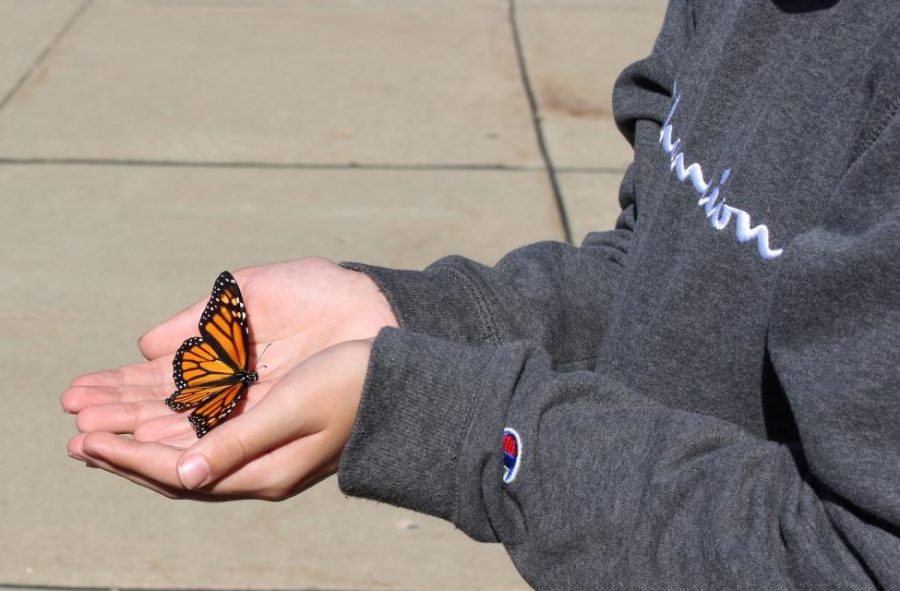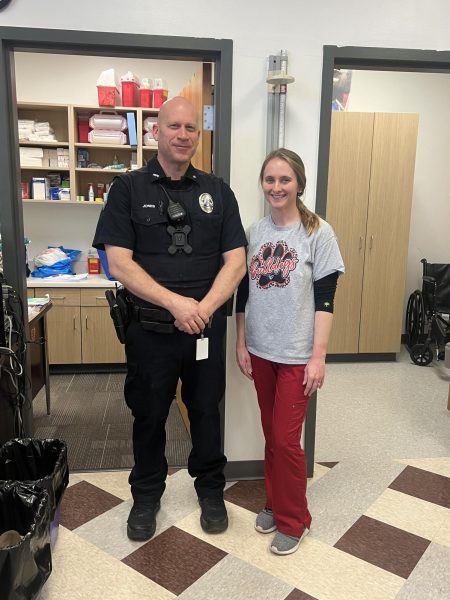New courtyard provides space for tagging and releasing butterflies
This year in the sixth grade, Ms. Ging’s science class is going to be raising and releasing butterflies. She is planning to raise Monarch butterflies so she can tag the butterflies for the Citizen Scientist program. Citizen scientists are ordinary people who take part in non-dangerous amateur experiments. Anyone can be a citizen scientist, though it does take time and dedication.
Ging acquired a $13,000 grant by Steam Catalyst Grants through the Allegheny Intermediate Unit to use for improving the courtyard. She is planning to do multiple things with the courtyard, including growing pumpkins for the Fall Fest, planting vegetables, putting in a greenhouse, a weather station, aquaponics unit, raising chickens and bats, and upgrading the pond. One of Ging’s main goals is creating the courtyard into an outdoor classroom for students to learn. She would like the kids to learn how to properly collect data and learn where their food grows. The main information she wants them to know is that bees are salient to our environment and our oxygen supply. All classes are welcome to use the courtyard, but Ging requests that they are respectful when using it.
The Monarch butterflies that the sixth grade raises in the courtyard are going to travel to Mexico. Monarch butterflies are endangered due to humans demolishing their habitats, which is why the sixth grade is only studying and tagging Monarch butterflies. It has taken four generations of butterflies to go through the United States before they go down south, which is the generation they’re tagging. It takes ten to fifteen days for a butterfly to come out of its chrysalis. During this period, the caterpillars are highly vulnerable. They can be attacked by any animal, though they are poisonous.
Monarchs are the only butterflies that are known to migrate two ways. In that way, they’re similar to birds. Monarchs are cold-blooded creatures, not warm-blooded like us. Due to this, they cannot withstand the frigid and harsh winters. Monarch butterflies are the only butterflies that migrate that far each year. While the monarchs are traveling to Mexico, they eat milkweed on the way, although they also largely rely on how much they ate when they were a caterpillar for fuel. If they did not eat as much as they needed to, it’s possible they could die off.
Normally Monarch butterflies live two to six weeks, but after they make it to Mexico they stay there all winter then migrate north for spring. This causes them to live for seven to eight months. It can take up to two months for the butterflies to reach Mexico. During migrating, the butterflies use air currents and thermals to travel at a more accelerated speed. During this journey, the monarchs travel about 3,000 miles to make it to Mexico. On their path, they face many threats, such as decreasing amounts of milkweed, diseases and parasites, and a loss of forests in Mexico. In Mexico, farmers have replaced some forests with avocado plantations so that their family can make a living. Even though the forests are at a lower elevation that the monarchs prefer, it still affects the forests that they live in.
We hope that all of the butterflies that are released from Freedom Middle School make it safely to Mexico and back to us next spring!








